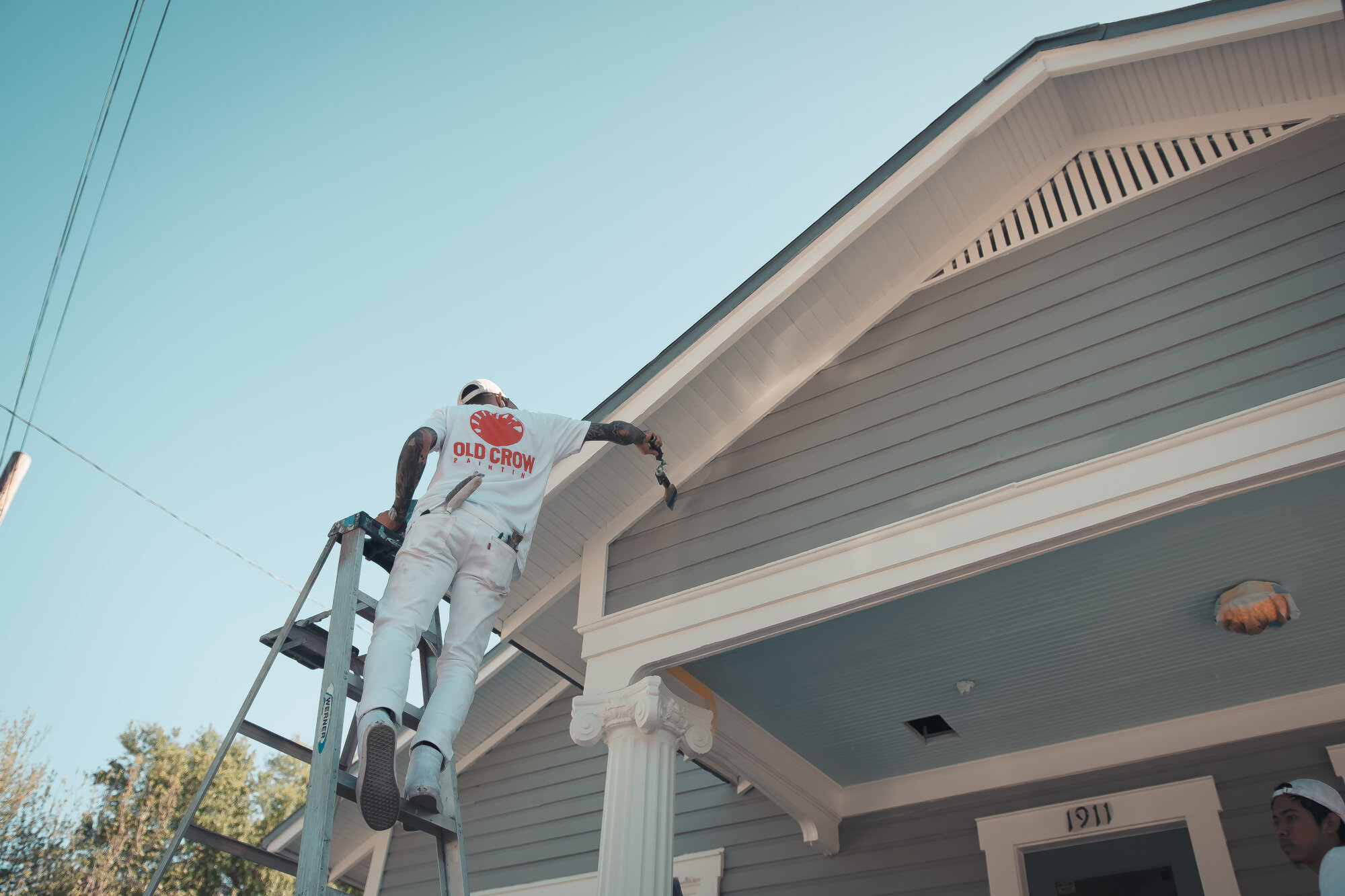Elastomeric Paint: Its Advantages and Uses for Your Project
For exterior painting projects, elastomeric paint is fairly popular. It will last longer, is very durable, and works on a variety of surfaces. On the other hand, it doesn’t let surfaces breathe much, is on the expensive side, and requires a careful hand to apply properly.
What is elastomeric paint?
Elastomeric paint is a high-build coating made with masonry and building exteriors in mind. Essentially, it is a thicker paint imbued with more solids. This lends to a durable, moisture and weather resistant paint that is applied, oftentimes, in one coat.
What is elastomeric paint made out of?
It’s easier to think of elastomeric paint as a subset of existing paint. The paint is typically a latex acrylic formula. The latex is what gives the paint its resistance and thickness, as well as elasticity to prevent cracking if applied properly.
What makes elastomeric paint different from oil or acrylic paint?
The extra solids (latex) in the paint formula make elastomeric paint stand out from other types. Due to the latex, elastomeric paint is substantially thicker than other kinds of paints. It often needs just a single coat and a back brush to be evenly and properly applied.
When was elastomeric paint invented?
To respond to the issue of painting cracking and peeling on various masonry surfaces, elastomeric paint was formulated. The formula was invented in the late 1950s, and is still a very popular method of moisture-proofing surfaces and achieving beautiful color.
Surfaces you can use elastomeric paint on
You can use elastomeric paint on just about any surface, but its usefulness depends on the climate of your area. If it’s hot and damp where you live, elastomeric paint helps protect structural integrity.
Where should elastomeric paint be used?
If you have a good budget, elastomeric paint truly shines on an exterior project. While not as popular, there are variants of elastomeric paint for use on the interior of your home. Instead of a full coat on an interior, the paint is used to solidify small spiderweb cracks in plaster.
Why are elastomeric paints chosen for exterior painting projects?
If you can afford elastomeric paint, it is likely the best choice. It lasts the longest, and keeps your surfaces safe. Those looking for eco-friendly solutions in hot climates use elastomeric paint and coating to resist heat and UV rays. That makes Florida an ideal place to use this industrial paint for your home or commercial building!
What surfaces are best complemented with elastomeric paint?
Any exterior surface: wood, brick, stucco, concrete, etc. can be the base of your paint. The watertight seal that elastomeric paint provides will protect your surface from damage. Essentially, any surface prone to water damage or excess heat benefits from having elastomeric paint cover it.
How elastomeric paint is applied
Before considering elastomeric paint for your project, proper application needs to be considered. Improper application can lead to adverse effects, including bubbles on surfaces, and at worst structural damage.
What should you look out for when applying elastomeric paint?
Anything you’d consider to be a large fracture or hole in your surface must be dealt with before applying the paint. If not, bonding issues will crop up and you’ll have wasted your money. If wood is your surface, extreme caution is advised.
Misapplying elastomeric paint on wood will trap any moisture inside the coating, where it will rot from the inside. Wood needs to be completely dried before the painting process. Hiring a professional painting company with experience is the best way to ensure proper application.
What tools do you need to apply elastomeric paint properly?
While it is possible to apply elastomeric paint yourself, it isn’t recommended. Due to the paint’s texture, novice painters might apply an uneven coat, or not apply enough of a coat. A too thin coat of elastomeric paint won’t provide the weather-proofing benefits you’re using it for.
Additionally, primer should be applied and dried fully before the coat of elastomeric paint is done. This gives another layer of protection, and stops the paint from peeling.
How long does elastomeric paint last after application?
When applied well, elastomeric paint lasts for up to ten years. An elastomeric coating lasts up to twice as long, for 20 years. While a pricier alternative, this paint is the longest lasting, and most durable option available. It also prolongs the need for expensive fixes by filling in small cracks.
Do you need professional painters for your home or business in the Tampa Bay area? Look no further! Give us a caw for a free estimate of your project.

